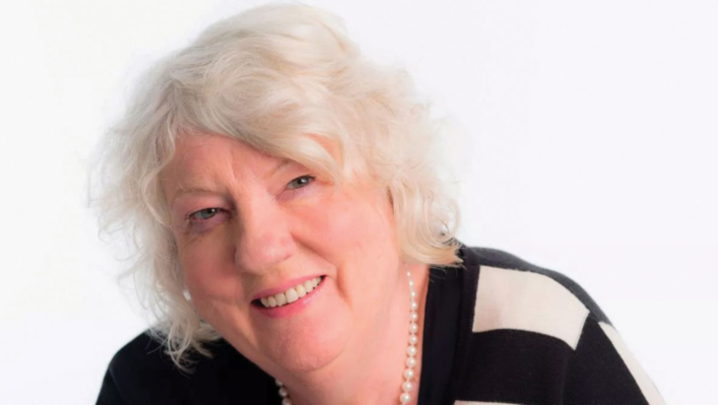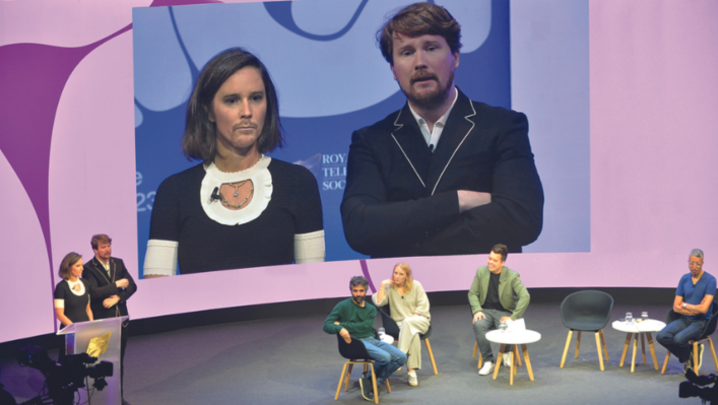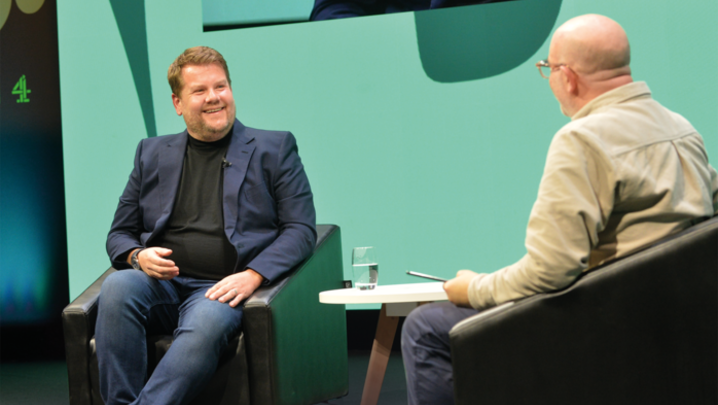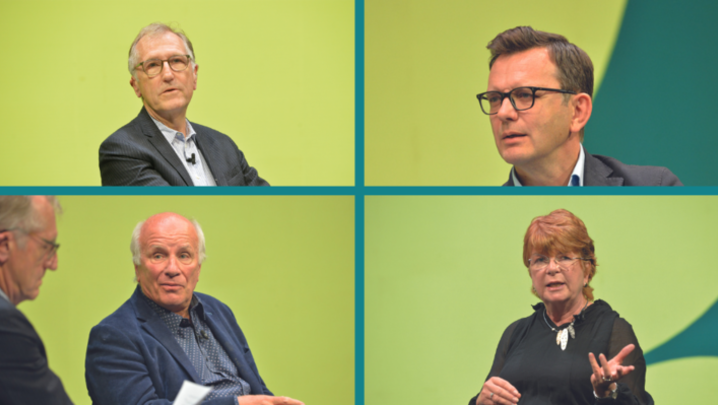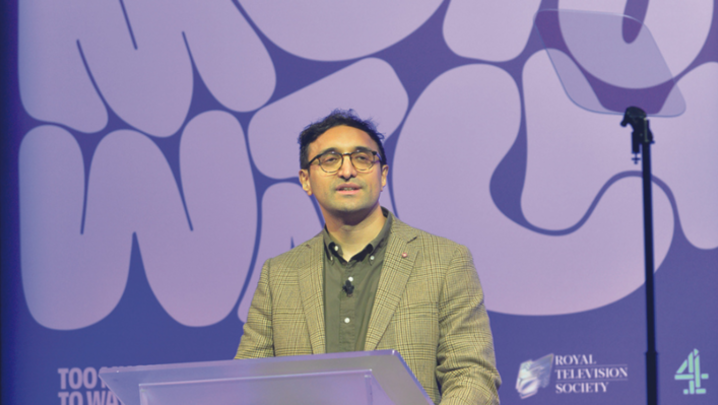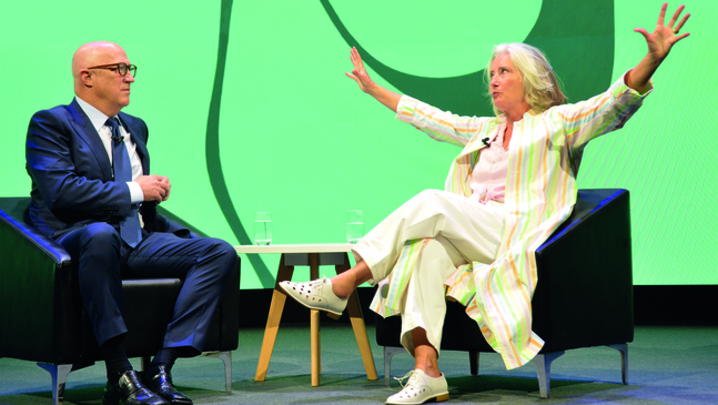The RTS gains an insight into the commissioning strategy for YouTube Originals.
“We are in the middle of a revolution of creativity,” according to Luke Hyams, who commissions documentaries for YouTube Originals. His aim is to nurture mould-breaking films that appeal to the platform’s young demographic and which don’t get lost in the deluge of video content available to his audience.
He explained his approach at a recent RTS event, “YouTube Originals: How an ecosystem of content creators and audience trends inspire the commissioning strategy”. Hyams was joined by the directors of two of his recent films, Terms and Conditions: A UK Drill Story and How to Be Behzinga, Brian Hill and Kevin Batchelor, respectively.
Also present were London-based journalist Andre Montgomery-Johnson – aka Mr Montgomery – who narrates Terms and Conditions: A UK Drill Story, and Ethan Payne, aka Behzinga, YouTube star and the subject of How to Be Behzinga, which recounts Payne’s emotional and physical transition from overweight gamer to endurance athlete.
Hyams told the RTS that his focus was on “partnering British producers and YouTube creators to create exciting premium programming experiences. We take inspiration from the personalities, the trends, the formats that are blowing up on YouTube. Every show we do allows us to delve into a different pocket of YouTube taste [and] look at different targeted audiences, which makes it different to any other platform or broadcaster’s commissioning strategy.”
The two 2020 documentaries illustrated his point. Drill videos have been massively popular on YouTube, while Behzinga was an established YouTube star before the non-scripted show was made.
Unusually, however, Terms and Conditions… was directed by a veteran award-winner (Hill’s credits include the Bafta-winning Feltham Sings, set in the London young offenders’ prison) who knew nothing about drill and little about working with YouTube before he took on the commission.
Hill said: “I was reluctant to do it at first but then I thought this is on my doorstep in London and it’s an interesting social phenomenon that needs to be explored… I wanted to discover why music was again being blamed for causing society’s ills.
“I thought it would be hard to penetrate that world and get people to talk to me, but it wasn’t. That was largely due to Andre. He’s got an in and made the introductions.”
Andre’s Mr Montgomery channel is the voice of drill on YouTube, noted Hyams, who added: “To take Andre’s voice and mesh it with Brian’s was a great opportunity.”
The film was also something of a risk for YouTube, which has been criticised for providing a platform for what many people believe is a style of rap responsible for fostering gang violence. In May 2019, protesters gathered outside YouTube’s London HQ to urge the video-sharing platform to take a tougher stance against content that they believed promoted knife and gun crime.
Terms and Conditions… was an attempt to make a balanced film that explored the music’s connections to knife crime, gangs and drugs. Drill musicians and performers were featured alongside interviews with bereaved mothers whose sons were killed on London’s streets.
Hyams said the film contained “an anti-violence message wrapped up in the music [the participants] loved” – and acknowledged that it gave him a few sleepless nights, particularly as YouTube was criticised in the film. “It was a nail-biting experience,” he admitted.
“I have to credit the guys I work with at YouTube and Google Policy, especially Ben McOwen Wilson [regional director, YouTube EMEA]. They stood behind me and pushed for us to make an honest appraisal.”
For Montgomery-Johnson, being involved in Terms and Conditions… was “life-changing”. He wanted to show drill “in all its facets” and “open doors for everybody within every demographic”.
He added: “Growing up in Brixton, I felt like a statistic – one more child that will go through the system, maybe get a job, maybe go to uni, maybe go to jail. I didn’t want that. I felt that sharing my story… I want to be who I want to be regardless of what anybody has to say. If that means doing it through a documentary… why not?”
He praised Hill’s empathy and rapport for the rappers who agreed to be filmed: “He put two and two together quickly… A lot of drill artists are unreliable and quite dangerous.
“Some of them have mental health issues and behave in certain ways which they don’t see are wrong. Or they haven’t ever been corrected about certain behaviours. Brian was able to pick that stuff up quick.”
Unusually, the interviews were filmed in black and white. Hill said that “in lots of places” that would have been impossible: “They’d think that black and white will freak out our audience. YouTube was completely on board with all of that.”
How to Be Behzinga is another YouTube Originals project that touches on sensitive topics, including cancer, mental health, fitness, masculinity and friendship. Batchelor told the RTS that he had set out to make a series that connected with Behzinga’s YouTube following.
“When we spoke to Luke originally, we had an idea of what we wanted to make. The film was going to sit on his channel and speak to his audience,” he recalled.
“I have never worked with anyone on camera who was as willing to put themselves out there as Ethan [Payne] was. There was nowhere we couldn’t go. For a film-maker, that is brilliant but also terrifying – when do you know when to pull back and when do you know to go deeper?”
Payne, nevertheless, enjoyed the experience, despite the length of the shoot doubling from four to eight months due to disruptions caused by lockdown. “Working with Kevin and his crew felt like a family environment, it was so relaxed. I could laugh and joke but get the job done,” he said.
These two documentaries are very different in terms of their running times – one is a feature-length film while the other is a three-part series. “When producers come to us, we want them to think about what the best form is,” explained Hyams. “We take data into consideration but there are no restrictions or limits. That’s one of the great things about commissioning at YouTube.”
As for subject matter, would he consider wildlife films? “Yes, if there is a way that they can be connected to something relevant to YouTube,” said Hyams. “If there’s a creator out there who’s already doing some great stuff in wildlife or who has a passion for wildlife that you could partner with.… If there is a wildlife channel that is doing well, potentially doing something together could be good.
“But, for the most part, we’re very personalityled.… Wildlife, yes, but it would definitely have to have a human element.”
And animation? “We’re open to it. We’re commissioning for YouTube Kids, so if there is stuff that is skewed towards a younger audience, we’d love to take a look at any pitches.
“We try and stay one degree away from what’s already on YouTube. We’re not doing adult, narrative scripted animation.”
Regardless of genre, originality is crucial. “We don’t like things that feel as if they’ve already been pitched to Netflix or BBC Three or someone else. Stuff that could fit anywhere isn’t really for us.
“It needs a USP that connects it to YouTube and makes it feel it could only ever exist on YouTube. One of the things that gets us off to a good start is saying, ‘This is the YouTube channel I’d like to partner with.’
“For us, it makes sense to partner with and celebrate people who’ve already put in loads of time with YouTube.”
Report by Steve Clarke. ‘YouTube Originals: How an ecosystem of content creators and audience trends inspire the commissioning strategy’ was an RTS event held on 11 March. The session was hosted by Rhianna Dhillon, BBC 6 Music film and TV critic.


